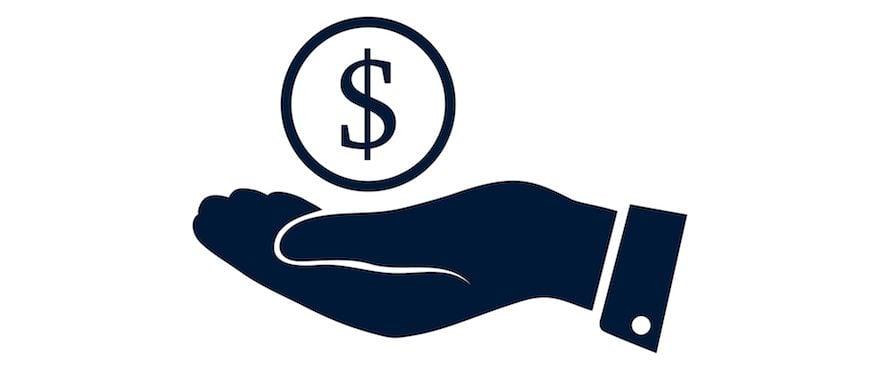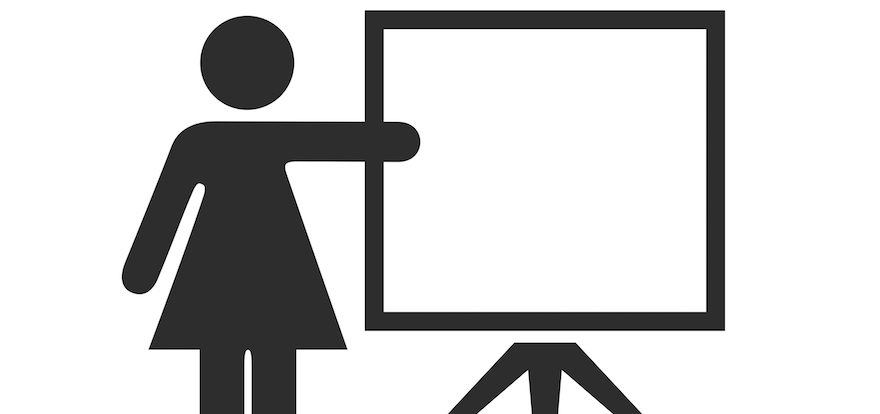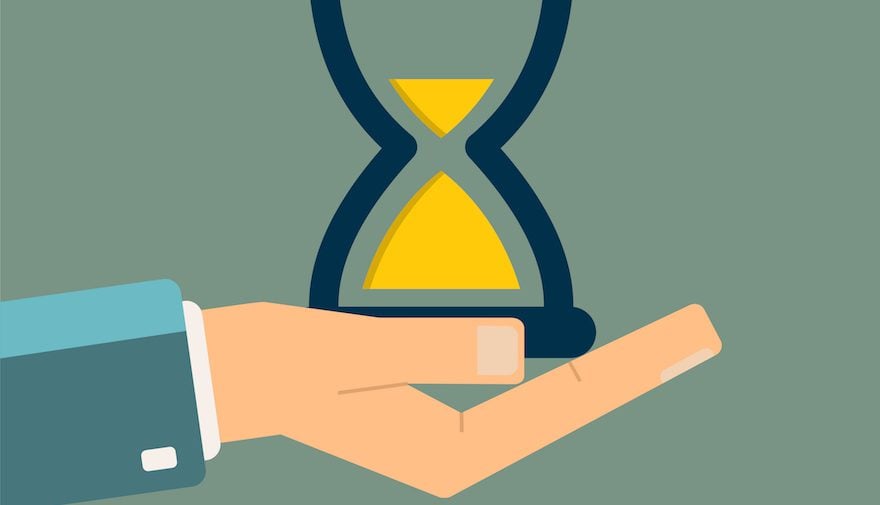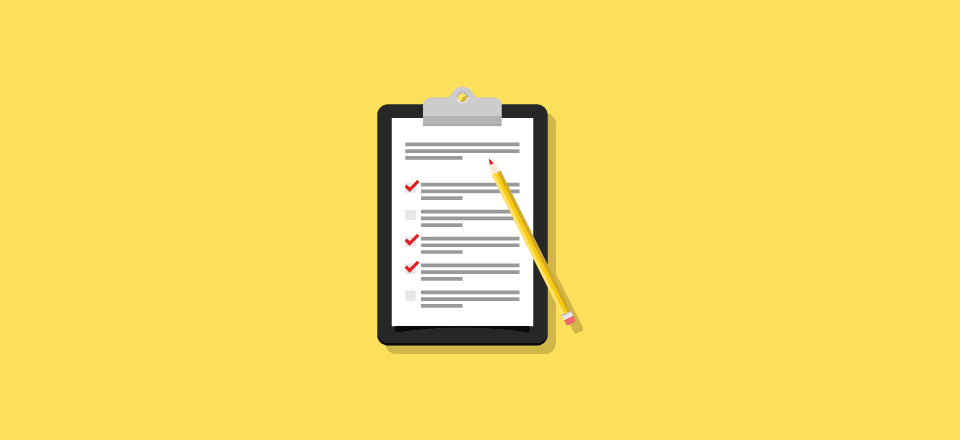Have you ever experienced a web design client that texts you during the weekend for tips on social media? How about the client that tries to haggle with you because they have a “friend” who can do something for a fraction of the price?
Bad clients exist, and your business is going to suffer if you decide to work with them.
All web designers and developers need to get started somewhere. Unfortunately that’s where we get stuck in a rut. You think, “Well, I need the money, and it would be nice to build my portfolio. What could go wrong?”
The problem with this logic is that you’re already setting yourself up for failure. The first client decision you make as a young developer is sure to mix into your decisions in the future. After all, every client you talk to presents the possibility of more money, and every client helps build your portfolio.
The question is, what types of clients are going to be on that portfolio? What every designer/developer needs is an ideal client checklist, or a list of criteria for each potential client that comes around.
Here’s a tip: Make an ideal client checklist today and leave the bad clients for someone else to mess with.
- 1 Why It’s Important To Know Who Your Client Is
- 2 A Good Client is a Good Fit
-
3
Criteria for When You Talk with New Clients
- 3.1 Criteria #1: The Client is Willing To Invest in Their Company
- 3.2 Criteria #2: The Client is Ready to Change
- 3.3 Criteria #3: The Client is Coachable and Ready to Learn
- 3.4 Criteria #4: The Client is Ready for Decision Making (With You)
- 3.5 Criteria #5: The Client Has a Vision in Mind
- 3.6 Criteria #6: The Client Shows Respect for Your Time
- 4 Is Your Ideal Client Checklist Ready?
Why It’s Important To Know Who Your Client Is

Image by john dory / shutterstock.com
As a business owner, you have four resources to protect:
- Time
- Money
- Brand
- Personnel
Each of these are affected if you opt to work for a low-quality client. Let’s explore each of them in-depth:
Time
Freelancing and running a small business requires a significant amount of your time on a daily basis. Most freelancers have trouble balancing regular life and work, so the clients you select shouldn’t deplete your precious time any further.
Let’s say you have a client who doesn’t respect your time. They call you late when you’re about to wrap up for the day and most conversations last way too long.
What does this lost time do to your business?
It cuts out growth. Those bits of time outside of design and development should be preserved for marketing, accounting, sales, and support. Without this time a business is bound to fail, all because of a client who is inconsiderate.
Money
When you’re spending too much time on one or two clients, opportunities for making money dwindle. This ties into the time point above, seeing as how your disrespectful client is cutting out the tasks that bring in new clients. Not only that, but your other clients are going to feel neglected as well, potentially sending them to other companies or freelancers.
Another reason you need to know your client is because they may not pay you at all, or the check might come far too late. Money is the driving force that keeps your business afloat, and bad clients sink the boat.
Brand
Remember how you needed some interesting clients to build your portfolio? That’s all fine and dandy, but what about when an unruly client drops you at the last minute? Then you have no money to show for it and no project to post on your portfolio.
The worst clients generally leave you with little results to show for your efforts. They hesitate with decisions, moving the process slowly along. A good number of projects are never finished with these clients, or you’re left with a junky result that you won’t want representing your brand in the first place.
Personnel
This involves both freelancers and businesses with employees. Imagine a situation where you hire a client because of the potential for making a decent amount of money. You don’t have an ideal client checklist, so this client ends up being uncoachable and unwilling to take advice.
Sure enough, one of your employees is assigned to this account, making for a rather difficult work environment for them. Unfortunately, you hired this developer because they’re brilliant, they work hard and they’re enjoyable to be around. But this one client is changing that outlook. Now, the employee looks stressed out most of the time. They’re making bad decisions because they can’t think straight and the project isn’t making much money because it’s taking forever.
A client is no excuse for risking high quality workers, and this includes your own sanity and work ethic.
A Good Client is a Good Fit
This is the golden rule for the ideal client checklist. But it’s not enough to have this in your mind. You must communicate the golden rule to your clients before taking them on.
Although it might sound intimidating at first, it’s more about establishing a strong relationship with the client and deciding who will be making decisions on certain aspects of the project.
For example, you have a schedule to keep with every client, so it’s essential to decide on who’s going to keep track of that schedule. Your best bet is to think about your current workflow and figure out how to mesh the client into that process. If you like getting paid every two weeks, communicate that to the client. It might not work out that way, but at least you’ve made strides in showing that you’re willing to state your opinion.
The earlier you establish this relationship, the better off you’ll be.
Criteria for When You Talk with New Clients
We recommend making a list of around five to ten criteria when talking to new clients. This becomes your ideal client checklist. This way you don’t overwhelm yourself and become too picky in the selection process.
Below are some suggestions for your ideal client checklist. These items work to protect your most valuable resources (Time, Money, Brand, and Personnel) while also separating the good from the bad clients.
Criteria #1: The Client is Willing To Invest in Their Company

Image by SIM VA / shutterstock.com
Clients with budget problems wreak havoc on your own design business. The first concern is whether or not they’re going to pay you for services. Next, you’re looking for a company that’s willing to give you additional money when it’s needed.
Complete a test to see how the potential client responds to your budgetary needs. If they sound extremely concerned, you might have a problem.
However, your best bet is to make an agreement on payment. I personally like to start with a downpayment right off the bat, showing they have some sort of capital. Then, depending on the service, you should get a contract in writing indicating exactly when during the month they’re going to pay you.
If a payment is missed, that’s when you halt work on your end.
Criteria #2: The Client is Ready to Change
When a client hires you to make changes to a web site or build a new one, they’ve at some point recognized that their online presence is in need of an overhaul.
There’s no reason for you to sit around and listen to the problems your client has had in the past. Although hearing how crappy the past web designer was might boost your ego, it’s not helping out the current project.
This criteria goes both ways, because a rule must be set that says the whole point of the project is to make a transformation. It’s also a good idea to ask your client what they want to transform. Ask them, “Specifically, why are you hiring me?” Then, “What would you like to change/improve with your current web presence?”
After that, you can start formulating a list of the steps needed to make those changes, which can then be passed onto the client for approval. You’ll get some clients who are attached to certain parts of the old design, but remember, you’re the boss when it comes to the site.
Criteria #3: The Client is Coachable and Ready to Learn

Image by Arcady / shutterstock.com
You can be the best designer in the world, but if your client isn’t willing to take direction, it’s a lost cause from the start.
We see this time and again in sports, where a high talent draft pick has problems with coaching. They eventually create a toxic locker room environment and get traded or dropped. Don’t let your ballclub lose money on a poorly researched draft pick.
Criteria #4: The Client is Ready for Decision Making (With You)

Image by Felicity.S / shutterstock.com
Getting on the phone with a client and not making decisions is a huge waste of time for both sides. This criteria sets the expectation that communication is meant for decision making. In short, you’re not talking on the phone with the client just to hear them say that they need to go back and talk about it with their other business partners. Sure, sometimes this is required for bigger decisions, but if it has to do with web design, you’re the leader and they are there to confirm your decisions.
A point person must be established from the start. You should communicate with this one person and one person only, and they should be ready to make decisions with you.
Criteria #5: The Client Has a Vision in Mind

Image by Nizwa Design / shutterstock.com
Having the desire for change (Criteria #2) is different from having a vision in mind. The ideal customer has a dream for where they would like their business to be next year, in five years, and in twenty years.
Your design supports that vision, so it’s crucial to figure out that they have a dream in the first place, along with the details of that dream.
What are they trying to create with this new design? What are their customers getting from the design? Are they looking for higher profits, more customers, or a stronger email collection platform?
Ask these questions and you’ll find the answers (or lack thereof).
Criteria #6: The Client Shows Respect for Your Time

Image by Palii Yurii / shutterstock.com
It may sound difficult to figure out whether or not a client is going to respect your time at first, but we suggest going with a few tests during your initial interactions.
The goal here is to ensure that your client is going to meet their own deadlines, show up on time for meetings (or phone calls), and deliver requested website materials. You can’t make these discoveries until getting to work with them, but you can run some tests.
Start by organizing a face-to-face meeting or a phone call. Schedule an exact time and send them an outline of what you’re going to talk about.
Then…
- See if they reschedule. (Multiple times?)
- Did they show up to the meeting/call late or skip it completely?
- See if they’re prepared for the meeting.
- Do they have questions for you?
- Are they turning the conversation into a multiple hour affair?
- See if they try to cram multiple people onto a conference call, making it difficult to communicate and make decisions.
- Think up a few questions about your meeting outline. You can typically see if they have taken the time to look over your notes.
Is Your Ideal Client Checklist Ready?
The whole point of an ideal client checklist is to protect your valuable resources, regardless of the size of your business. This includes finding clients who respect your time and those who have a goal in mind when hiring you.
Bookmark this checklist in your browser to refer back to it whenever you have a new potential client. And let us know in the comments if you have any other points to add to the list.
Article thumbnail image by flower travelin’ man / shutterstock.com









Awsome article Brenda! Congrats!
Wonderfully explained everything and regarding new business especially when we are doing as a freelancer thank you very much for wonderful tips thanks again
Thank you very much for the article, I really like it!
Awesome!
I think you’ve just published the post for me.
You won’t believe Brenda, I regularly face each of the issues you’ve mentioned.
Thanks again.
Great checklist Brenda! I love how you were able to really get to the core of the ideal client. There are a plethora of ideas on what an ideal client should be but I’m sure most of them can be reduced to what you have here. Thank you!
Great article Brenda!
Wonderful tips. I wish I had this resource over a year ago. I could have saved myself a lot of headaches… and late night phone calls.
Thank you. This is very timely as I’m just stepping in to a new business startup. I’ll be mindful of these points as I search for business.
great read! thanks!
Excellent article, thank you. As a freelancer, falling into the ‘any work is good work’ trap is something I’m sure most of us go through at some point or other.
You have shared some awesome tips about Creating Ideal Client Checklist. I hope it will help me to create my own. Thanks.
Very good post. I like a metaphor that says that you are the bouncer who holds the red rope at the entrance to only let the ideal client in. Yes some clients can be a disaster and screw you and your business.
I totally agree with you for the most part. For us, our web design team will temper their desire to work with an ideal client if it is an awesome project. You know, sometimes those amazing website builds come from less than ideal clients.
For the most part though, working with a nightmare client isn’t worth it for us, because the work suffers in the end and then it isn’t a jewel in the portfolio anyway!
Great post!
Brenda this is the second time i visit your article, the first time i thought you were right but a bit unrealistic about picking clients, i am from Chile and the economical situation is not for pickers. Still your words kept making eco on my mind, i couldn’t help but start analyzing my clients. You are so right, is insane. This may seem like a logical move but most of us (freelancers) have the tendency to give the best not even thinking on the personal cost of our actions, little we know we are digging our own grave. Long story short knowledge without action is just stupid, so i started to cut loose all the “bad clients” those that keep shooting the bill from one month to the next, those that call at any hour they see fit for the most absurd things and so on. I can´t thank you enough, they were killing me and i was just enduring for the sake of a good service. I have done so many things on my new free time! i know is going to be bumpy at first but i can totally live with that. Keep it up Brenda, i look forward to your next post.